The US jobs report was largely in line with expectations. February was the second consecutive month that the US economy created more than 200k jobs.
United StatesNonfarm payrollsIt is the first time since last June and July. The 235k is just below the revised January 238k gain (initially 227k). |
U.S. Nonfarm Payrolls, February 2017(see more posts on U.S. Nonfarm Payrolls, )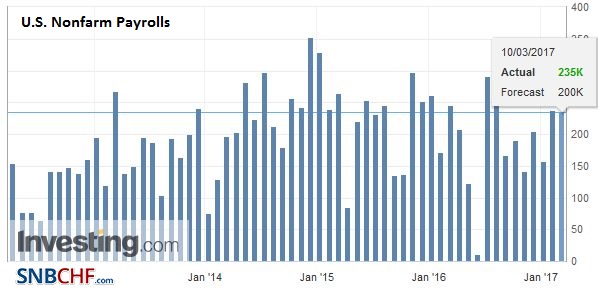 Source: Investing.com - Click to enlarge |
Participation RateParticipation rate increased to 63.0% from 62.9%. |
U.S. Participation Rate, February 2017(see more posts on U.S. Participation Rate, )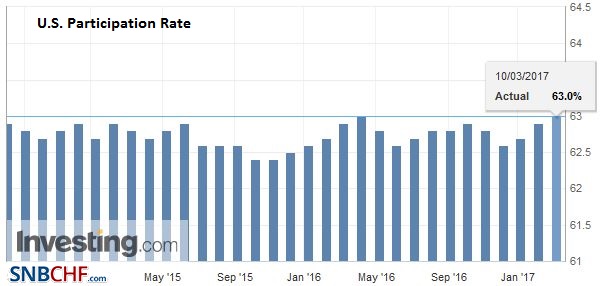 Source: Investing.com - Click to enlarge |
Unemployment RateThe unemployment rate ticked down to 4.7% from 4.8%. |
U.S. Unemployment Rate, February 2017(see more posts on U.S. Unemployment Rate, ) Source: Investing.com - Click to enlarge |
Average Hourly EarningsA shadow of disappointment comes from average hourly earnings. They rose 0.2% compared with a median guesstimate of 0.3%. However, the disappointment was blunted by the upward revision to the January figure to 0.2% from 0.1%. This means that the year-over-year pace stayed steady at the 2.8%, which is still the upper end of the recovery. |
U.S. Average Hourly Earnings, February 2017(see more posts on U.S. Average Earnings, )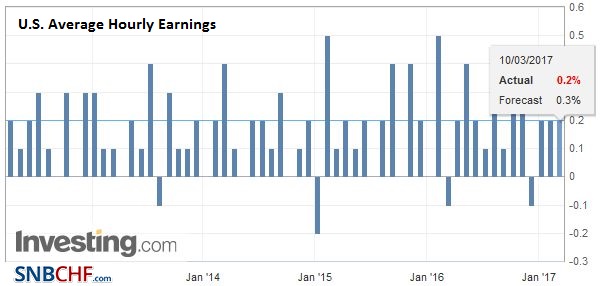 Source: Investing.com - Click to enlarge |
There is nothing in the report that ought to cast doubt on the likelihood of a Fed hike next week. The market has it discounted, and given the recent string of commentary from Governors as well as regional presidents, not to move would be destabilizing and undermine the credibility of the Federal Reserve.
CanadaCanada also reported its February employment data. It is too good to be true. Canada says it created 105k full-time positions. To put this in context, it would be as if the US created one million jobs in a month. It takes the US 5-6 months to do so. Canada says that of the 105k new full-time positions, women accounted for 101k. Even if this overstates the job creation in Canada, the underlying trend is strong.
|
Canada Employment Change, February 2017(see more posts on Canada Employment Change, )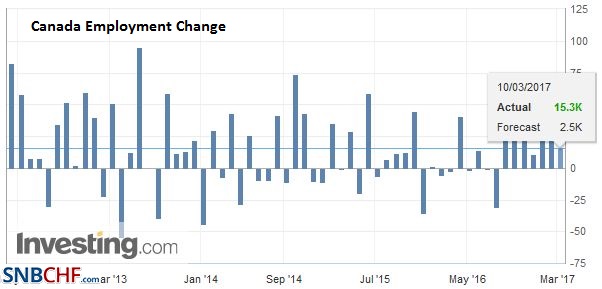 Source: Investing.com - Click to enlarge |
|
And the unemployment rate slipped to 6.6%, matching the January 2015 cyclical low. Note that like the US (and many other high income economies with improving labor markets) wage growth is poor. The average hourly earnings increase in Canada stands at 1.3% year–over-year (1.2% in January). It is less than half the US pace.
|
Canada Unemployment Rate, February 2017(see more posts on Canada Unemployment Rate, )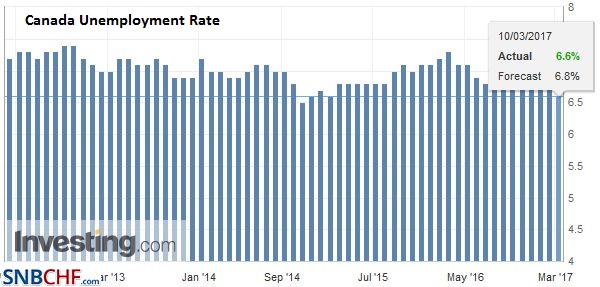 Source: Investing.com - Click to enlarge
|
|
Canada Participation Rate
|
Canada Participation Rate, February 2017(see more posts on Canada Participation Rate, )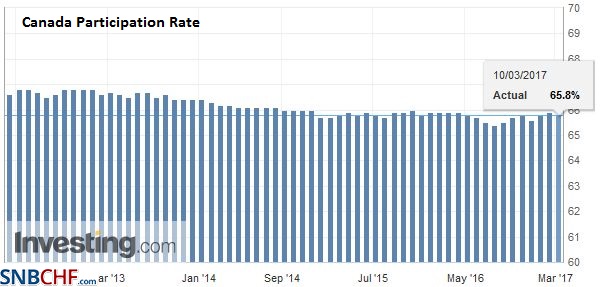 Source: Investing.com - Click to enlarge |
Lastly, recall that the first quarter has been notoriously weaker than the other quarters during the US recovery and expansion cycle. The first quarter this year is shaping up to be consistent with that pattern. US growth appears to be tracking a little below trend.
Tags: Bank of Canada,Canada Employment Change,Canada Participation Rate,Canada Unemployment Rate,jobs,newslettersent,participation rate,U.S. Average Earnings,U.S. Nonfarm Payrolls,U.S. Participation Rate,U.S. Unemployment Rate







































